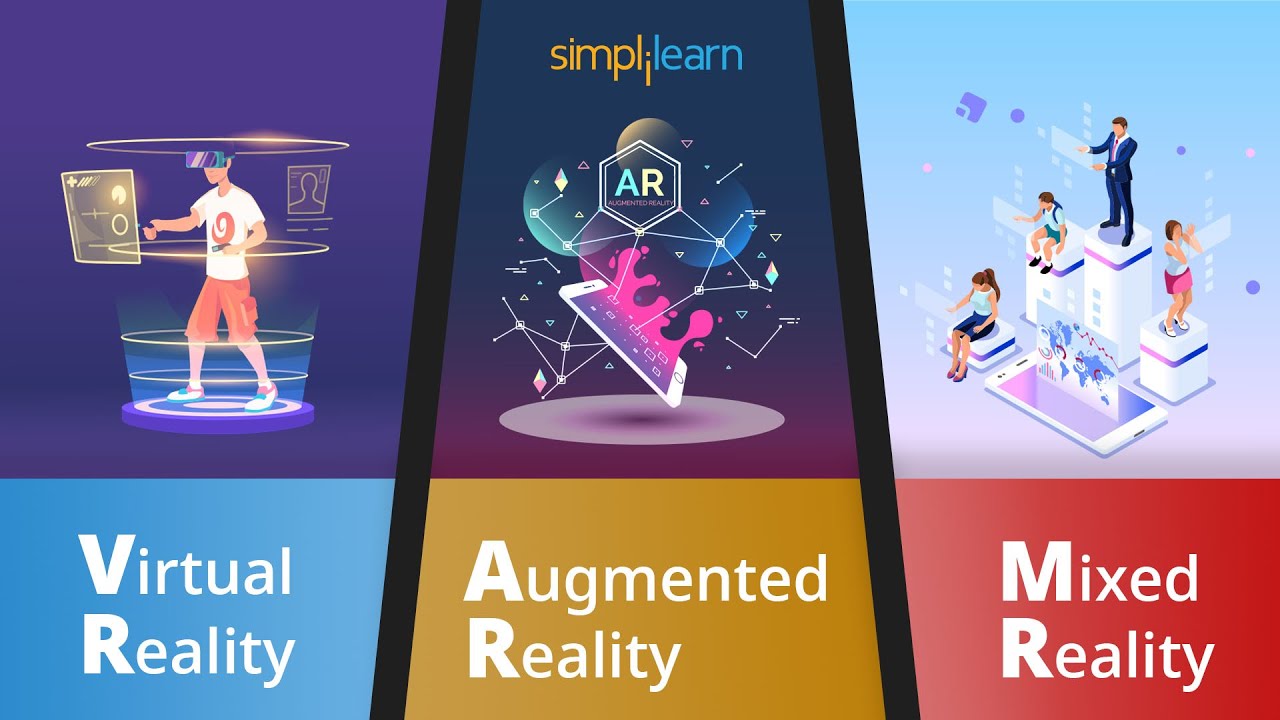Virtual reality and Augmented reality
Virtual reality (VR) and augmented reality (AR) are two emerging technologies that are transforming the way we interact with digital content and the world around us.
Virtual Reality
While they share some similarities, they differ in their approach and the level of immersion they provide. Virtual reality is a technology that simulates a completely artificial environment, often using a headset or other specialized equipment. The user immerses completely in the virtual environment, with the ability to move around and interact with objects as if in a physical space.

VR technology uses computer-generated images, sounds, and other sensory inputs to create an immersive experience.
The concept of VR has been around for several decades, with early experiments dating back to the 1960s. However, it wasn’t until the 1990s and 2000s that VR technology began to advance rapidly, driven by the development of more powerful computers and graphics cards.
Today, various applications use VR technology, ranging from gaming and entertainment to education and training.
One of the primary benefits of VR technology is its ability to create immersive experiences that would be difficult or impossible to achieve in the real world. For example, VR can simulate dangerous or inaccessible environments, such as the depths of the ocean or the surface of Mars.
VR can create training simulations for complex tasks, such as flying an airplane or performing surgery.
Augmented Reality
A smartphone, tablet, specialized glasses, or headset can provide the experience of AR. Augmented reality, on the other hand, is a technology that overlays digital content on top of the real world.
AR technology uses computer vision and other sensors to track the user’s position and the objects around them and then overlays digital content on top of the user’s view of the real world.
AR technology has been around for several years, but it has only recently begun to gain mainstream adoption. One of the most well-known examples of AR is the popular game Pokemon Go. Which overlays digital Pokemon characters on top of the real world.
However, AR technology has many other potential applications, from retail and advertising to education and training.
AR enhances the user’s real-world perception, offering extra information about surroundings like building names or location history.
It is possible to use AR to create interactive experiences. Like games or puzzles overlaid on top of the real world.
Differences Between VR and AR
VR is a completely artificial environment, while AR overlays digital content on top of the real world. While VR and AR share some similarities, they differ in their approach and the level of immersion they provide.
VR provides a high level of immersion, while AR provides a more limited level of immersion.
While practical applications like retail and advertising commonly use AR, entertainment purposes like gaming and movies often employ VR.
People typically experience VR through a headset or other specialized equipment, while AR can be experienced through a smartphone or tablet.
Challenges and Opportunities
Despite the potential benefits of VR and AR technology, the industry must address various challenges and limitations. One of the biggest challenges is the cost of the equipment and the development of the content.
VR and AR technology can be expensive, which can limit their adoption by consumers and businesses.
Another challenge is the potential for negative side effects, such as motion sickness and eye strain. VR technology can also be isolating, as users are completely immersed in the virtual environment. AR technology, on the other hand, can be distracting and may interfere with the user’s ability to focus on the real world. 온라인카지노